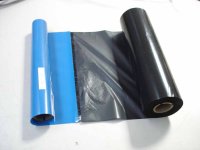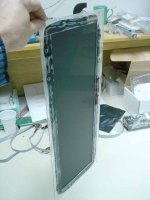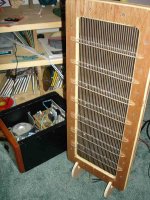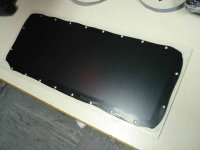Maybe I never tried large enough amps, but I've played quite loud from time to time and they never gave me problems...
But I suppose you want this:
http://www.quadesl.com/pdf/esl_protection.pdf
http://www.srcdevices.com/pdf/cgseries.1_src1.pdf
http://www.newark.com/NewarkWebCommerce/newark/en_US/endecaSearch/partDetail.jsp?SKU=64K2256&N=0
I think here in Holland you can order from Farnell or Nedis, but they don't have to cost much when ordered from foreign suppliers either...

But I suppose you want this:
http://www.quadesl.com/pdf/esl_protection.pdf
http://www.srcdevices.com/pdf/cgseries.1_src1.pdf
http://www.newark.com/NewarkWebCommerce/newark/en_US/endecaSearch/partDetail.jsp?SKU=64K2256&N=0
I think here in Holland you can order from Farnell or Nedis, but they don't have to cost much when ordered from foreign suppliers either...
maudio writes:
BTW, I am still looking for a good overvoltage protection device that will limit the peak voltage over the 57's tweeter panel to around 1500V. They get fried sooo easily
I was going to say a diy spark gap, but the gas discharge surge supressor that v-bro linked looks much better.
v-bro writes:
have you guys ever thought about using those for the high voltage bias?
Very nice unit. So much easier than building one and variable voltage, too. How much would a pair of them cost?
i do not think that we really care for much current since once everything is charged there is not much move to what i know ..
i have been assured that those were enough at the time of purchase from the company techs ..
it is not that expensive ..
and way easier/faster to tune than normal bias supply
i have been assured that those were enough at the time of purchase from the company techs ..
it is not that expensive ..
and way easier/faster to tune than normal bias supply
i remember paying something like 40-50$ for the one i got
call them ...
the one i have is an E serie .. E101 exactly
0-15 VDC input
15VDC = 10KV @ 0.2ma ( 0.0002a )
wich should be more than enough to charge up in a correct time frame i believe!
pretty small also, about 25%+ the size of a 9V battery!
call them ...
the one i have is an E serie .. E101 exactly
0-15 VDC input
15VDC = 10KV @ 0.2ma ( 0.0002a )
wich should be more than enough to charge up in a correct time frame i believe!
pretty small also, about 25%+ the size of a 9V battery!
Thanks for the tips!
I'll go for the gas discharge surge suppressor, I am afraid zeners start to distort the signal long before they should come into action (currents are quite small).
A diy solution is also attractive but I doubt if it will work more than once, the contacts will burn away as there is oxygen available...
I see farnell can deliver the suppressors, they just don't stock them so there's an additional charge. Oh well..
found that tread about powder coating
I'll go for the gas discharge surge suppressor, I am afraid zeners start to distort the signal long before they should come into action (currents are quite small).
A diy solution is also attractive but I doubt if it will work more than once, the contacts will burn away as there is oxygen available...
I see farnell can deliver the suppressors, they just don't stock them so there's an additional charge. Oh well..
found that tread about powder coating
Greetings Gentlemen..
..i would like to contribute to this thread a discovery of mine..
So.. in the quest for membranes and coatings i have stumbled on an interesting, promising and widely available at your local Computer Hardware Store - ready to play music matterial..!!!
here is a picture :
..i would like to contribute to this thread a discovery of mine..
So.. in the quest for membranes and coatings i have stumbled on an interesting, promising and widely available at your local Computer Hardware Store - ready to play music matterial..!!!

here is a picture :
Attachments
yes .. thats a heat transfer ink film for fax mashines..
and fortunatly for us all - the ink coatting is conductive .!
.i found my speciment at a company's warehouse cleanup.
this stuff feels quite thinner than my known 15ì graph-coated polyester i used till now .. i could guess its about 6~8ì .. its resistivity measures with my DMM @~300-500k for 1 inch probe distance .. heat shrinks at ~300C .. ink layer melts at ~100C and hardens as soon as the heat gun passes away ..
naturaly i could not resist trying out this product..
..and the results were very good to my opinion..
this film charges much better than graph coated ones ..
the panels sensitivity went way up ..
no more graphite scattering and HV leaks..
reproduction is more vivid and detailed . when that girl with the guitar screams she hearts my ears . crystal clear ..
and fortunatly for us all - the ink coatting is conductive .!
.i found my speciment at a company's warehouse cleanup.
this stuff feels quite thinner than my known 15ì graph-coated polyester i used till now .. i could guess its about 6~8ì .. its resistivity measures with my DMM @~300-500k for 1 inch probe distance .. heat shrinks at ~300C .. ink layer melts at ~100C and hardens as soon as the heat gun passes away ..
naturaly i could not resist trying out this product..
..and the results were very good to my opinion..
this film charges much better than graph coated ones ..
the panels sensitivity went way up ..
no more graphite scattering and HV leaks..
reproduction is more vivid and detailed . when that girl with the guitar screams she hearts my ears . crystal clear ..
Attachments
..some may say resistivity is low and charge migration distortion may become an issue.. i could not hear any from my setup.
i could "feel" some "overdetail" or some "harshness" at high volume
but i think its my harware's silicone now audible with the thinner and well charged membrane..
negatives.:
unfortunatly this product is widely found at 21cm standart A4 paper sheet width.. probably a A3 size width could exist ..
its appearance is pitch black.. fingerprints show mucho..
cannot say matterial's make or manufacturer because there wasn't any on my speciment (only a code no: 9Z2901-050D) but i guess they all should have ~same specs ..
i could "feel" some "overdetail" or some "harshness" at high volume
but i think its my harware's silicone now audible with the thinner and well charged membrane..
negatives.:
unfortunatly this product is widely found at 21cm standart A4 paper sheet width.. probably a A3 size width could exist ..
its appearance is pitch black.. fingerprints show mucho..
cannot say matterial's make or manufacturer because there wasn't any on my speciment (only a code no: 9Z2901-050D) but i guess they all should have ~same specs ..
Attachments
hi v-bro ... listening to this ink film play music and the "plug and play" nature of the matterial makes it to my opinion ideal for our DIY..
...i think we found something really interesting here...
.the thikness of the film is what it should more or less be ..
.the ink coatting is as uniform as a factory can make and is very durable and even hard to scratch - the ink will stay on film for ever..
.should be humidity stable - not water based..
.just cut - glue - heat strech - and use..
...unfortunatly only A4 size width (21cm) exists commercialy . so that makes us tall-narow panels.. but not much of a minus for me as i prefer this style..
i was thinking of a speaker made of two side by side tall-narow panels tilted a bit to make two sweet spots at the opposite couch.
...i dont see anyone recomenting this matterial - probably i'm the first on this forum to find it can be used - maybe i should post it on a new thread to inform more people...
...i think we found something really interesting here...
.the thikness of the film is what it should more or less be ..
.the ink coatting is as uniform as a factory can make and is very durable and even hard to scratch - the ink will stay on film for ever..
.should be humidity stable - not water based..
.just cut - glue - heat strech - and use..

...unfortunatly only A4 size width (21cm) exists commercialy . so that makes us tall-narow panels.. but not much of a minus for me as i prefer this style..
i was thinking of a speaker made of two side by side tall-narow panels tilted a bit to make two sweet spots at the opposite couch.
...i dont see anyone recomenting this matterial - probably i'm the first on this forum to find it can be used - maybe i should post it on a new thread to inform more people...
Attachments
would be good if...
you can find a solvent that can remove the ink down to the film. This way you can remove any ink that will end up under the stator spacers. This is capacitance which you want to keep to an absolute minimum.
There are available EC coatings that are not that expensive and are safe to use (no solvents). You can also play with PVA adhesive (nontoxic) and not have any health concerns and cost is almost free. With both of these coatings you can have an very low added mass and very high resistance exactly where you want it on the diaphragm. You can also use what ever choice of diaphragm film you want (tensilized mylar low micron). So I fail to understand why you would think that this is a great find? I am not trying to be a wet blanket but you are losing sight of some of the more important issues here (shunt capacitance high surface resistivity and mass). Carefull how you handel your panels made with this as there will be full charge at the outside edge of the frame all the way around the stator. Regards Moray James.
you can find a solvent that can remove the ink down to the film. This way you can remove any ink that will end up under the stator spacers. This is capacitance which you want to keep to an absolute minimum.
There are available EC coatings that are not that expensive and are safe to use (no solvents). You can also play with PVA adhesive (nontoxic) and not have any health concerns and cost is almost free. With both of these coatings you can have an very low added mass and very high resistance exactly where you want it on the diaphragm. You can also use what ever choice of diaphragm film you want (tensilized mylar low micron). So I fail to understand why you would think that this is a great find? I am not trying to be a wet blanket but you are losing sight of some of the more important issues here (shunt capacitance high surface resistivity and mass). Carefull how you handel your panels made with this as there will be full charge at the outside edge of the frame all the way around the stator. Regards Moray James.
.. i thought of recomenting this alternative solution after using it myself with ease and success . and it sounds great to my ears also..
.. i think capacitance is formed by two opposing metal plates or in our case the stators . the problem arrises in the case of perforated stators-spacer sandwich as the area ocupied by the spacer on the stator cannot make music but is audio charged anyways thus resulting in higher energy consumption whithout equivalent output . in my wire-stator case wires are suspended only over movable area of the membrane and not over spacers resulting to minimum dead capasitance ..
.. in my implementation the film does not reach the outer side of the spacer-frame . it is cut whith a rasor and peeled of ~1cm before the edge so you cannot come in contact whith the charged membrane from the perimeter of the speaker . u can see this at the photo posted above . yes you could insert a nail through the wires, touch the film and get stinged but i would not do that on any ESL, i scaned the panel allover with neon screwdriver and found no places to get zapped..
.. ok . lots of people have invested lots of thinking, time, trouble and money to find the best, stable, uniform, easy to apply, permanent coating just to hold the right charge to this mylar thing and still be as thin and as light as possible .. and now some guy tells you that there's a factory quality coated stable film you could use that you can find even for free from partly used rolls
and is right under our noses . i felt that this matterial could be a solution for those DIYers that havent done their coating investment yet or have performance and replicating troubles as i had..
..ok . you cant use your super thin mylar but this IS thin enough and all your panels WILL be the same regarding coatting (and charge) . but most of all a difficult, messy and uncertain procedure for DIY could now get out of the picture . if u choose to accept it..
..so why ignore such a matterial .?.
To Moray,
it saves us a lot of trouble getting the right material if it can be purchased at the local office store.
Above that it saves trouble making the conductive layer.
I don't care much about the price, trouble is getting the right material and prep it the right way...
It would be most helpful if anybody knows some specs of these toner rolls.....
I still think of it as a great find....
it saves us a lot of trouble getting the right material if it can be purchased at the local office store.
Above that it saves trouble making the conductive layer.
I don't care much about the price, trouble is getting the right material and prep it the right way...
It would be most helpful if anybody knows some specs of these toner rolls.....
I still think of it as a great find....
yes,some specs and proof types of this foils will be good to know,i bought a reel today,and i can say that it is not conductive.Even at a distance of say some 1milimeter between my probes ,i can´t measure that with a range of 2Megaohms on my DMM.I test it on both sides of this foil.Its some foil for panasonic fax machines.
But i won´t give it up
But i won´t give it up
Just a few more points...
Tmyr: you are right about the capacitance. My comment was addressed ar those who use perf stator construction rather than wire stators. Having your charge coating extend all the way to the frame is not a good idea ever as it will lead to charge leakage via the frame. You may not have a problem now as everything is new and clean but with handling and time buildup of dust and cooking oil or humidity and dirt you will. Further leaving a charge gap at the outside edge of the diaphragm will give your diaphragm some additional stretch. Jim Strickland of Acoustat always left a space of uncharged diaphragm. This kept the charge on the diaphragm and permits extra stretch from the undriven film
Film thickness does make a difference in sound. You can use what ever thickness you like and it will work but it won't sound as good nor will your bandwidth be as wide as it could be. You can purchase SOTA film and coating material for less than $100.00 for a speaker project. I don't see the point of messing around with unknown films with low resistivity coatings and high overall mass. Heat shrinking diaphragms is inferior to stretching diaphragms.
A good buddy of mine has a set of Acoustat 0ne plus 0ne's which use 65 gage mylar skins which translates to 15.5 microns. Sounds very thin (thinner I'll guess that your ink film) but is considered thick in ESL circles. Listening to the Acoustats is no hardship they sound fine. Add a 5 micron Aluminum ribbon tweeter and you can hear immediately the improvement in high end response, switch to a one micron ESL tweeter and again you can hear the difference. This is just in the high end. Building with thin film diaphragms will yield improved bass and efficiency as well as improved high frequency response.
For what it costs to get the very best material available (cheap) why would you waste your efforts building with anything else? I'll get off the box now. Regards Moray James.
Tmyr: you are right about the capacitance. My comment was addressed ar those who use perf stator construction rather than wire stators. Having your charge coating extend all the way to the frame is not a good idea ever as it will lead to charge leakage via the frame. You may not have a problem now as everything is new and clean but with handling and time buildup of dust and cooking oil or humidity and dirt you will. Further leaving a charge gap at the outside edge of the diaphragm will give your diaphragm some additional stretch. Jim Strickland of Acoustat always left a space of uncharged diaphragm. This kept the charge on the diaphragm and permits extra stretch from the undriven film
Film thickness does make a difference in sound. You can use what ever thickness you like and it will work but it won't sound as good nor will your bandwidth be as wide as it could be. You can purchase SOTA film and coating material for less than $100.00 for a speaker project. I don't see the point of messing around with unknown films with low resistivity coatings and high overall mass. Heat shrinking diaphragms is inferior to stretching diaphragms.
A good buddy of mine has a set of Acoustat 0ne plus 0ne's which use 65 gage mylar skins which translates to 15.5 microns. Sounds very thin (thinner I'll guess that your ink film) but is considered thick in ESL circles. Listening to the Acoustats is no hardship they sound fine. Add a 5 micron Aluminum ribbon tweeter and you can hear immediately the improvement in high end response, switch to a one micron ESL tweeter and again you can hear the difference. This is just in the high end. Building with thin film diaphragms will yield improved bass and efficiency as well as improved high frequency response.
For what it costs to get the very best material available (cheap) why would you waste your efforts building with anything else? I'll get off the box now. Regards Moray James.
- Status
- This old topic is closed. If you want to reopen this topic, contact a moderator using the "Report Post" button.
- Home
- Loudspeakers
- Planars & Exotics
- ..didn't know how they sound till i made me one..






